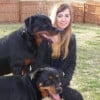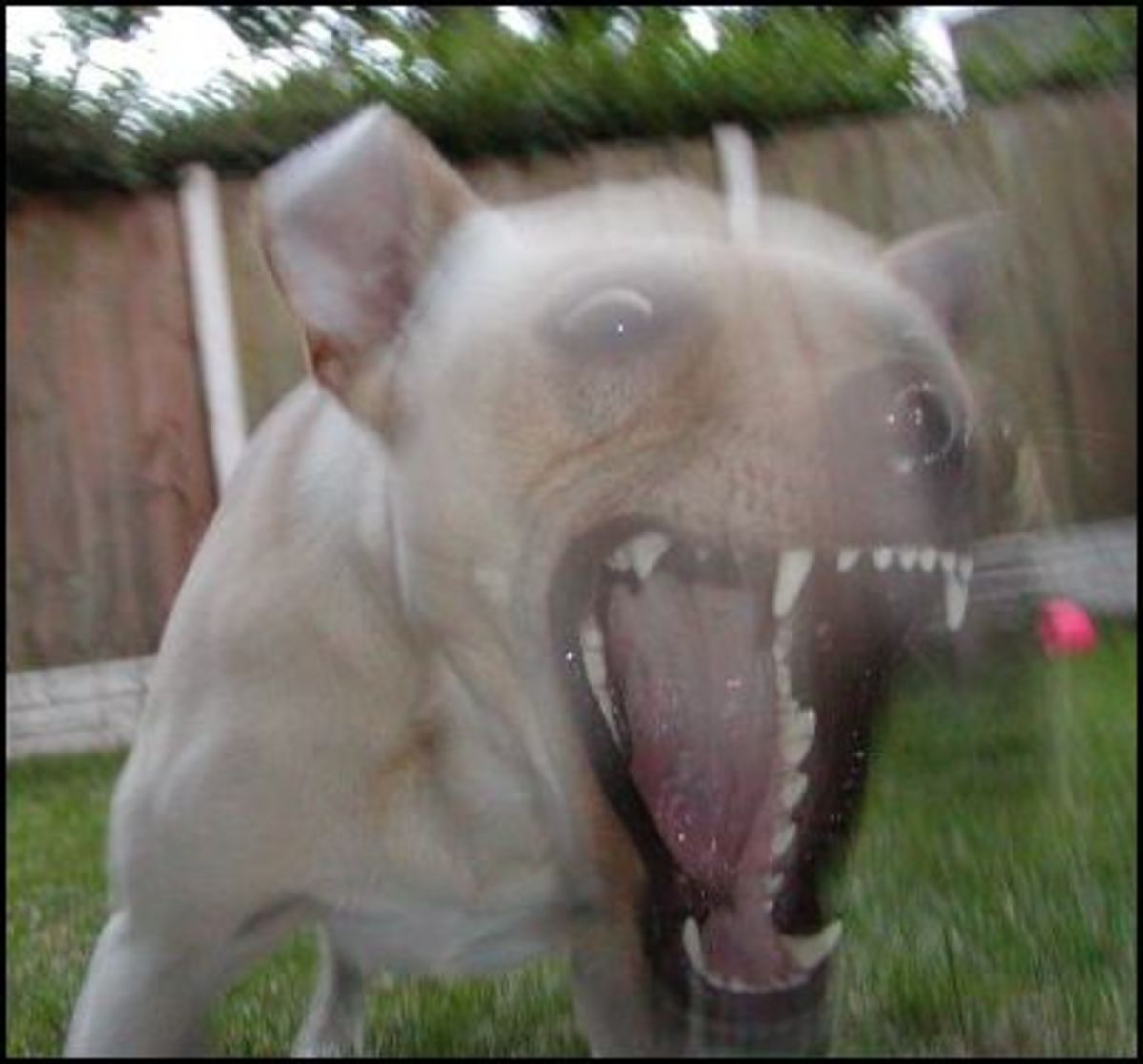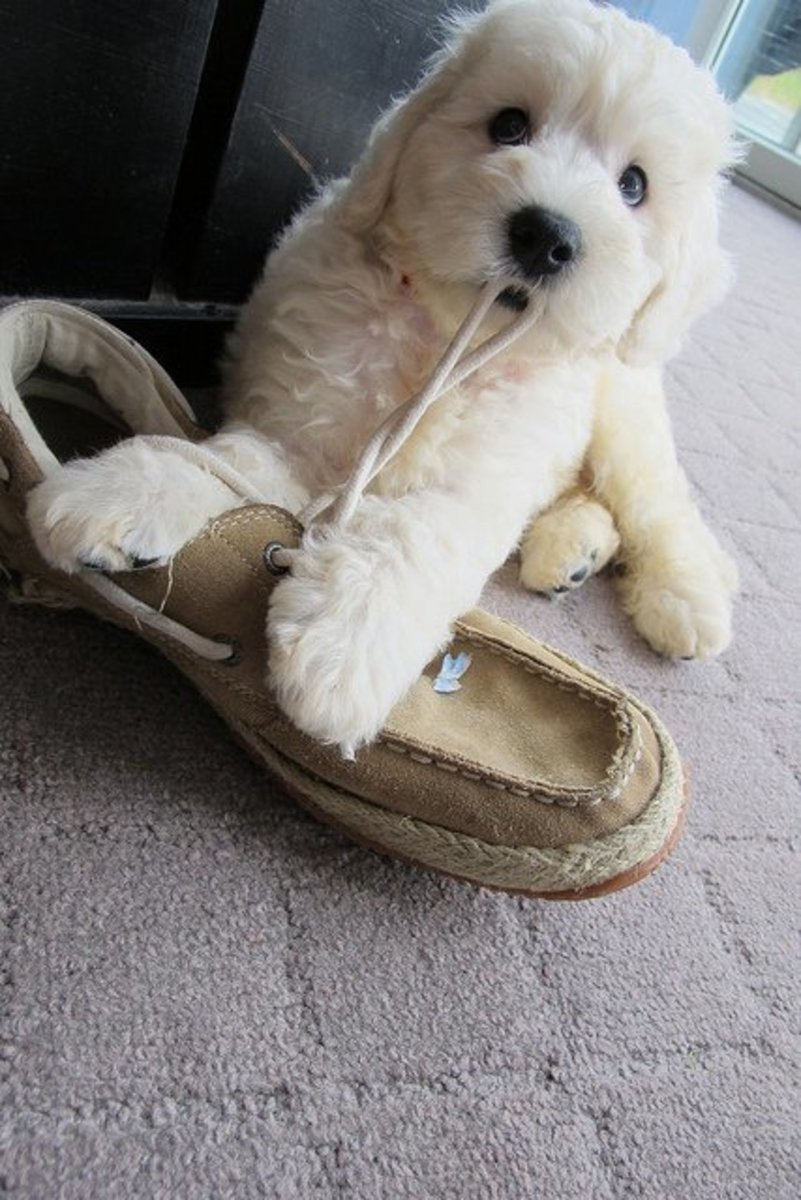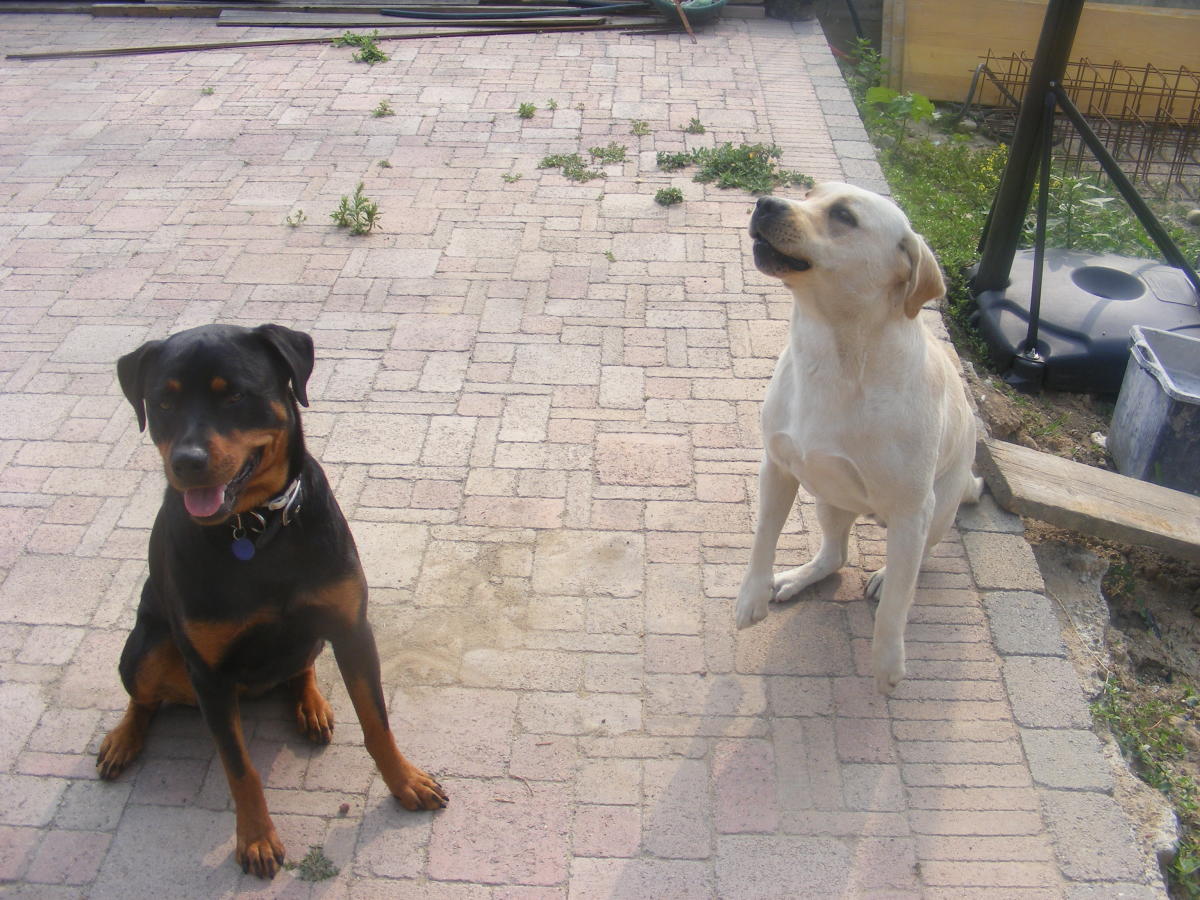Why Punishment Does not Work in Modifying Behavior in Dogs
Kind Behavior Modification Programs Offer a Win-Win Approach!
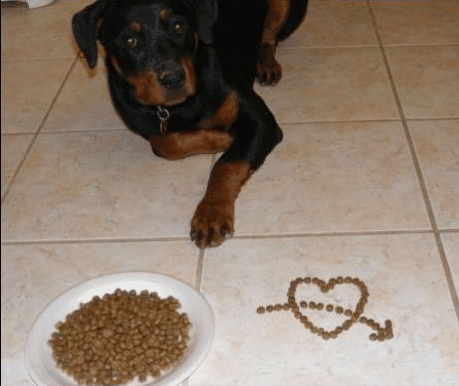
Why Punishment is Unlikely to Work in Solving Your Dog's Behavioral Problems
Punishment is often used as the first- line treatment for solving behavior problems in dogs. Whether you are tugging forcibly on a choke chain, using an electronic collar, or resorting to an alpha-roll, your dog will feel fear, discomfort, and pain, to some extent. Regardless of the tools used to deliver the correction, it is a fact that harsh punishments impair a dog's learning ability and may actually cause behavioral problems to worsen over time, often leading to excessive fear and even aggression.
There are much better choices to treat behavior problems in dogs and punishment should be the last treatment of choice, after better options have been exhausted. This means attempting gentler training methods and investing time in building trust rather than founding the dog and owner relationship on fear and mistrust. This may take time and effort, but the results are much more reliable as the owner works on treating the underlying emotional state of the dog, rather than camouflaging signs of aggression.
Dog Aggression Worsens if Dogs are Given Harsh Corrections
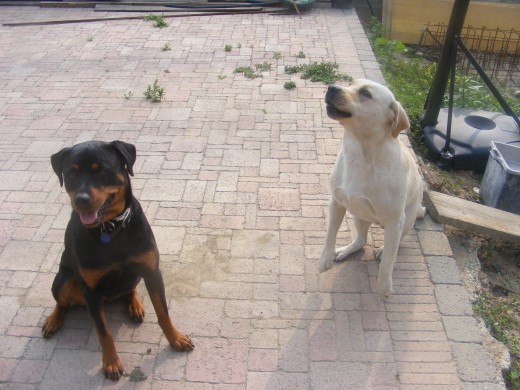
An Example of a Correction Gone Wrong
In order to evaluate the potential devastating effects of punishment, let's look at a few examples of some corrections gone bad. These are not rare examples, rather these are some of the most common mistakes dog owners commit, without even realizing it.
Example 1) The Gift of Growling
Rover is a four year old Boxer just adopted from a shelter. He was claimed to be kid friendly, but lately his demeanor towards a four year old toddler are worrying the parents. Rover indeed has resorted to growling when the toddler engaged in some rough playing involving hugging the dog tightly like a favorite stuffed animal. In order to fix the issue, the owner decides to immediately pin the dog down to the floor and keep its neck on the floor whilst belly up, as he has seen on a famous television show.
The ''alpha roll'' appears to work, indeed, just after a couple of tries, Rover appears to have stopped growling all together! However, the owner does not notice the cascade of effects this strong correction has brought along, in an almost snow ball effect.
Rover starts licking his lips when the child starts playing rough, and ultimately, cannot contain itself anymore when the toddler hugs him tight and directly bites the toddler's hand. The child cries and the owner brings Rover back to the shelter claiming it has bit the toddler ''out of the blue''. This is what seems to have happened, but at a closer evaluation, we will notice things did not exactly go that way.
Rover was punished for growling. By doing so, the dog was deprived of one of its strongest communicative means: the vital warning. By growling, Rover was simply telling the child ''I do not like this, please stop before I must resort to stronger actions''. By correcting the growling, the dog was deprived from this advanced warning, and ultimately was forced to engage in what he was trying to avoid as much as possible. The dog was basically taught to inhibit the growl, but with an inhibited growl, comes what could have possibly be avoided by ultimately paying attention: the bite.
Dog trainer Pat Miller, likes to call the growl an ultimate gift, something dog owners should treasure and that should not be corrected. Indeed, Pat Miller claims that it is due to these harsh corrections that behavior problems exacerbate bringing cases for her to work on.
Example 2) Negative Associations
Let's look at another scenario. Lucky, a two year old German Shepherd has matured and lately has started exhibiting aggression towards other dogs when on the leash. After watching a television program, the owner decides to kick him right in the chest the moment he starts barking at the other dogs. After a few attempts, the kick seems to work, Lucky no longer barks, but his owner is unable to recognize that he is suffering from strong stress every time he sees a dog. He licks his lips repeatedly and raises his hackles. However, since he is not barking, his owner assumes he is getting better so he decides to avoid crossing over to the other side of the street as he has done for some time to avoid meeting other dogs.
Right while they are passing by another dog, Lucky lunges and severely bites the ear of the dog passing by. The mutt screams in pain and there is a lot of commotion from the dog owner. Surprised, by the unexpected aggression, Lucky's owner decides to to increase the intensity of his corrections and invests in a prong collar and continues the kicking. Lucky is never the same dog, he lunges, growls and barks at any dog now and redirects his stress to the owner attempting to bite him as well!
What has happened? At a first glance, it looks like Lucky was starting to go insane. At a deeper glance we will notice how the corrections have worsened the behavior. Again, Lucky is not barking anymore after being kicked, but his stress levels are still there and cannot be contained once his stress threshold has been reached when passing near the dog.
Now, not only is Lucky being stressed from encountering dogs, but now stress has added on to stress, causing a cascade of cumulating effects. While once Lucky was just stressed by seeing dogs, now he also must worry about his owner kicking him and taking away the trust he had built in his owner. Not only, now the sight of the dog is associated with pain, and the effect is becoming unbearable, causing uncontrollable aggression.
Different cases, two same mistakes: dogs are being punished for manifesting aggression, but no effort is put on treating the underlying stress and changing the emotional state. If a more appropriate approach was taken, the results would have taken a bit more time, but they would have been far more effective and longer lasting.
Preferred Approaches to Solving Behavioral Problems in Dogs
But if correcting a dog for exhibiting aggression is wrong, what approach is right? You really cannot sugar coat aggression and give a treat when a dog growls, right? Well, not necessarily, so. Simply think what would happen if you would toss a treat the moment the dog growls...the dog stops growling!
So in the case of the German Shepherd, if we attached him to pole and offered him a bowl of canned food while other dogs were passing, sooner or later he would feel tempted to eat and stop the barking/growling/lunging behavior. According to Dog Star Daily's article on classical conditioning, (one of the most powerful training methods out there), being offered the food would not reinforce the dog’s barking and lunging, but actually, on the contrary, the food would reinforce the dog for stopping the barking and lunging.
In short, the dog will start looking for food every time a dog passes by and his emotional state will change from ''Oh my, a dog is coming near, better defend myself, bow wow, wow!'' to ''Hey, a dog is coming, where is my tasty food, dear owner?'' This ultimately is a win-win situation: the dog's emotional state has changed for the better and the owner is not somebody betraying him with violence but actually handing him down tasty treats! Not only, the dog is learning to focus on the owner rather than on the dog, when getting treats!
A similar approach can be used with the Boxer and the toddler. Instead of inhibiting the growl using violence, it would have been far more preferable 1) supervising the toddler and discouraging rough playing and 2) if hugging was inevitable, the Boxer could have been trained to tolerate it better by use of a de-sensitation program coupled with classical conditioning.
In other words, the Boxer could have been muzzled for safety and the child could have been taught to hug the dog slightly while the owner passed tasty treats. If this was done persistently and over time, the Boxer could have learned that in hugging the toddler meant no harm and that actually great things happened when he was embraced within this child's arms! Of course, as with any dog, supervision is a must and rough playing and hugging should be actively discouraged. But with proper training by using these powerful tools you can prepare your dog for worse case scenarios, hoping that a growl would come before a bite, as most dogs prefer to avoid resorting to their ultimate line of defense!
Gving Affection at the Wrong Times May Prove Deleterious
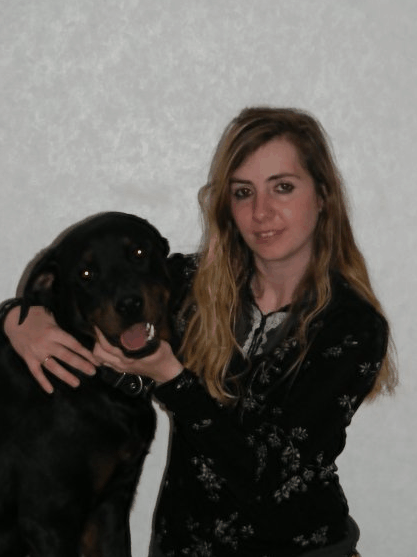
More and more dog behaviorists and associations are coming to realize that most dogs suffering from behavior problems obtain better results when dealt with using powerful tools such as classical and operant conditioning, along with de-sensitation programs. Corrections are generally used as last resort, especially since the great majority of dogs that appear to be aggressive are actually acting out of fear and stress.
The American Veterinary Society of Animal Behavior likes to compare the use of punishment with anti-cancer pills: they may work but there may be serious side effects lurking around the corner.
AVSAB also advocates teaching dogs alternative behaviors, instead of only punishing without giving a dog options for better behaviors. For instance, you may have read some old text book telling you to give a knee nudge in the dog's chest when the dog attempts to jump. With this approach the dog only learns that terribly things happen when he is greeting the owner and that being near the owner bad things happen. He may therefore feel in conflict since he feels tempted to greet the owner while at the same time fearing him. Instead, a better approach would be to turn around, wrap the arms up and give the dog zero attention when jumping up. This makes owners appear terribly boring and in a dog's eye they are not receiving what they crave the most: attention. But if attention is given every time the dog sits, the dog soon will learn ''Jumping does not yield anything, but if I sit, great things are to follow!''
While punishment does not work most of the time, or it may appear to work but just masks the symptoms without taking care of the underlying emotional state, it is important to keep in mind that what may appear to be kind approaches, may also be counter productive and cause behavioral problems to exacerbate in some cases.
One classic example is petting the dog when it is in a fearful state and babying it to calm it down. This may appear to be a good way to sooth and relax a dog in human eyes, but it does not work. By babying your dog when fearful, you are just telling him that he is so right to be fearful that he should continue to do so. This excessive protectiveness and babying is also why so many rescue dogs never get to recover. Owners feel too sorry for the dog and never give it an opportunity to bloom, since the dog is always being pet for being stressed and fearful and a vicious cycle develops. Dogs see the world in a different way than humans, and it is important to reach out to dogs and give them an opportunity to change the unwanted behaviors by rewarding the good and ignoring the bad.
For further reading:
- The Five Most Common Ways Dog Owners Ruin Their Dogs
While training your dog may take lots of patience, consistency and time, ruining your dog can just take a moment, often with the end result of undoing a good part of the hard work you have invested in your... - Reasons Why Dogs Growl
Your dog may growl for several reasons. He may growl at you if you get too close to his bone, if you try to move him off the couch, if you tend to abuse him, or he may growl at other dogs and people. In most... - Why Hitting Dogs is Unacceptable
The main reason why a dog should not be hit is because it is unjust. Dogs are loyal companions and unlike humans, they are not of a vindicative nature. When dogs upset owners it is very likely not because he...
